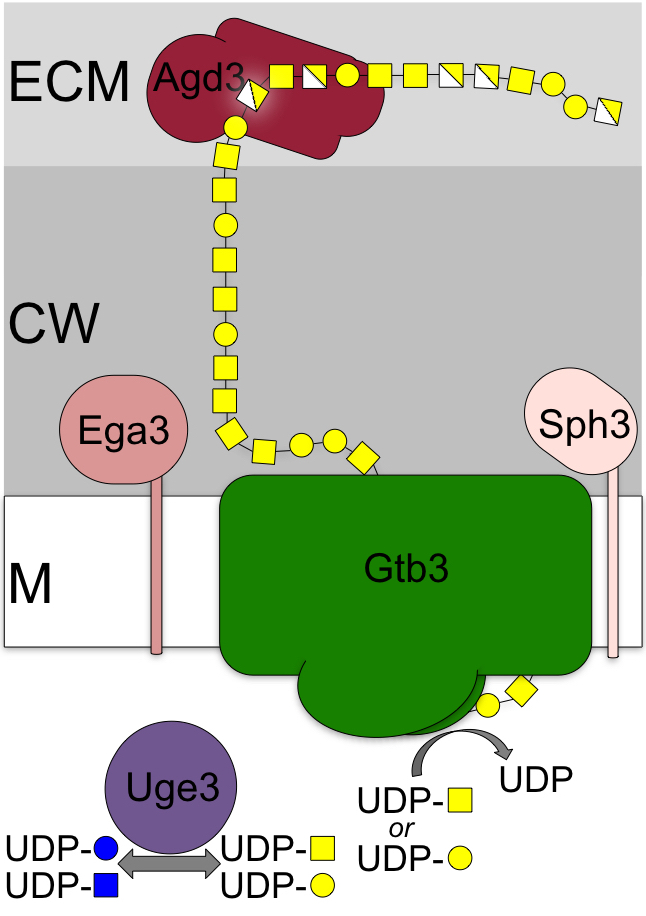Aspergillus fumigatus is a ubiquitous filamentous fungus that causes invasive lung infections in immunocompromised patients. Treatment of these infections using current antifungals is challenging and the mortality of invasive aspergillosis remains over 50%. During pulmonary infection the fungus grows as a biofilm within the lung tissue. The protective biofilm matrix allows the fungus to both adhere to the host cells as well as evade the immune system. Galactosaminogalactan (GAG) is an integral part of the A. fumigatus biofilm matrix. This exopolysaccharide is a linear heteropolymer of α-1,4-linked galactose (Gal) and N-acetylgalactosamine (GalNAc). The polymer is partially deacetylated after export and this modification is critical for biofilm formation and fungal virulence.
Our collaborator, Dr. Don Sheppard (McGill University) has identified a cluster of 5 co-regulated genes that are predicted to encode the proteins required for GAG biosynthesis. We have begun to characterize these proteins using in vivo and in vitro techniques. Characterization of Sph3 revealed that this protein is a glycoside hydrolase whose activity is essential for GAG biosynthesis and biofilm formation. Our results have enabled us to define a new family of glycoside hydrolases, GH135, and to suggest a role for the previously uncharacterized spherulin-4 family of proteins.
Current projects
Ongoing projects are focused on:
- Understanding the biological role of Sph3 and a second putative glycoside hydrolase, Ega3, in GAG biosynthesis.
- Functionally characterizing the Agd3 deacetylase,
- Developing Sph3 as a therapeutic for the prevention and degradation of GAG-dependent biofilms.
- Identifying and developing small molecule modulators of Agd3.
Selected Publications
- Deacetylation of Fungal Exopolysaccharide Mediates Adhesion and Biofilm Formation. Lee MJ, Geller AM, Bamford NC, Liu H, Gravelat FN, Snarr BD, Le Mauff F, Chabot J, Ralph B, Ostapska H, Lehoux M, Cerone RP, Baptista SD, Vinogradov E, Stajich JE, Filler SG, Howell PL, Sheppard DC. MBio. 2016 Apr 5;7(2). doi: 10.1128/mBio.00252-16.
- Sph3 Is a Glycoside Hydrolase Required for the Biosynthesis of Galactosaminogalactan in Aspergillus fumigatus. Bamford NC, Snarr BD, Gravelat FN, Little DJ, Lee MJ, Zacharias CA, Chabot JC, Geller AM, Baptista SD, Baker P, Robinson H, Howell PL, Sheppard DC. J Biol Chem. 2015 Nov 13;290(46):27438-50. doi: 10.1074/jbc.M115.679050.

